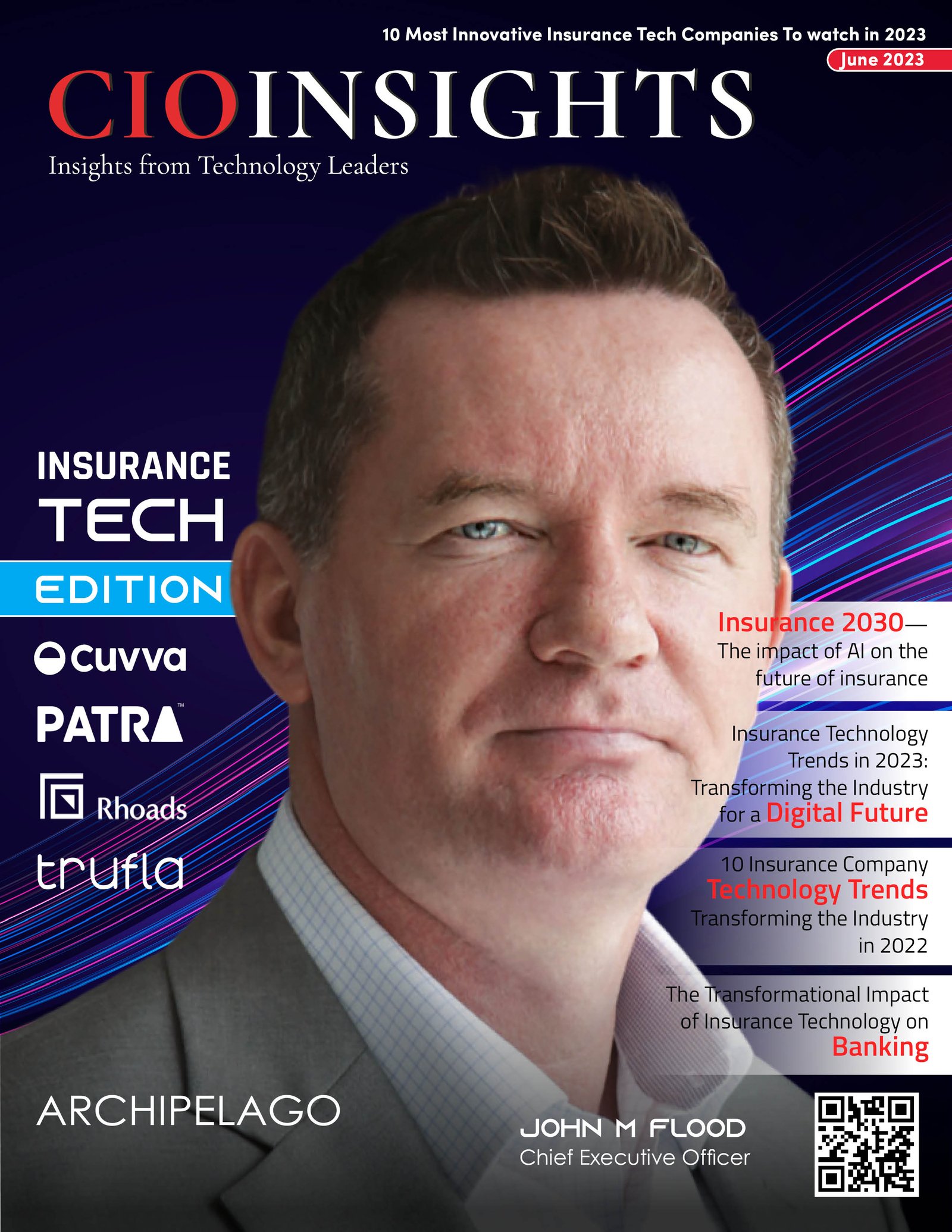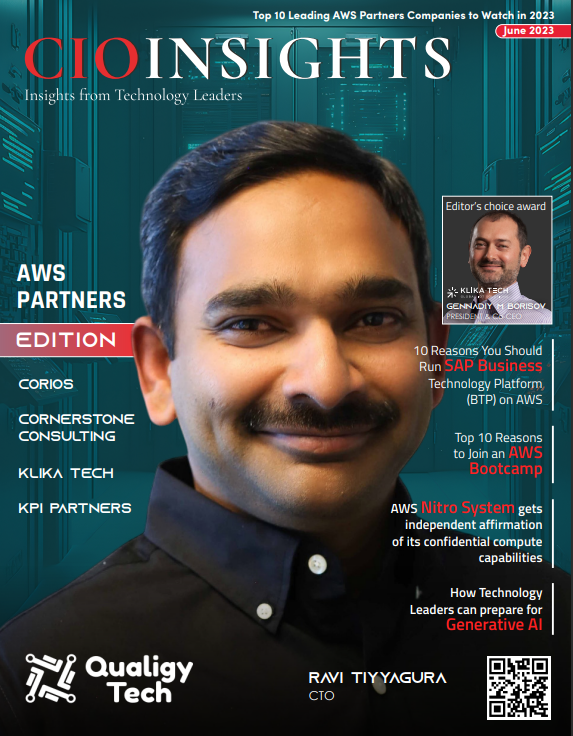Expanding partner opportunity with the Microsoft Cloud

We are going through the greatest structural transformation in our economy in a generation. And while we are not going to be able to predict every tailwind or challenge ahead, we know that digital technology will be key to resilience and transformation through whatever may come our way.
There is no going back to the digital adoption levels of two years ago. There is only going forward, and this will require a step function change in the level of tech intensity in the years ahead. Every company will need to be a technology company.
Our ambition is to foster foundational innovation that creates an entire ecosystem even greater than our platforms themselves. That’s what the Microsoft Cloud uniquely enables.
The Microsoft Cloud is the most comprehensive and trusted cloud. No other cloud offers our breadth or depth. The Microsoft Cloud helps power every organization’s digital capability while ensuring their independence and sovereignty over it. The Microsoft Cloud is built on trust in security, trust in technology, and trust in business model alignment. And the Microsoft Cloud offers the best integration across the technology stack while offering openness at every layer of the stack, ultimately improving time to value, reducing costs, and increasing agility.
I want to talk about the differentiating aspects of the Microsoft Cloud, and I want to talk about how we’re going to go even further, introducing new capabilities across the cloud to create entirely new technology categories and opportunities that will be critical to success for every organization.
Digital infrastructure
Let’s start with the massive changes we are experiencing at the infrastructure level. Coming out of this pandemic, one thing is clear: every organization is going to need more ubiquitous and decentralized computing power.
The Microsoft Cloud is the only cloud with the capabilities to support every organization’s multi-cloud, hybrid, and edge needs in this environment.
We’re building the world’s computer with more than 60 datacenter regions, more than any other cloud provider. And we’re not stopping there. We are bringing the power of the cloud closer to where data is generated. Just take what’s happening with 5G. The network is getting virtualized and moving to the cloud, as you see with AT&T, which chose Azure to power its 5G core network. We are also taking cloud compute to the edge with 5G deployments, enabling new scenarios, like precision inventory tracking at ports and production lines that automatically adjust with demand.
We have always led in hybrid, and we are expanding our hybrid capabilities so organizations can seamlessly build, manage, and deploy their applications anywhere. Azure Arc extends the Azure Control Plane across on-premises, multi-cloud, and the edge. Just last month, we announced that Azure Application Services can now run anywhere with Azure Arc.
There is a new layer of the infrastructure stack that’s getting created as the digital and physical worlds converge: the enterprise metaverse. This platform layer brings together IoT, digital twins, and mixed reality. With our metaverse stack, you can start with the digital twin to build a rich digital model of anything physical or logical, whether it’s assets, products, or complex environments spanning people, places, things, and their interactions.
The digital twin is bound to the physical world in real time so you can monitor the environment and collaborate within it using mixed reality. You can run simulations and apply AI to analyze and predict future states.
Data & AI
Data is the most strategic asset for every organization, and every business needs to become digitally sovereign over their own data. Too many digital aggregators today have sophisticated game theoretic pricing and bundling strategies where they end up taking your data and charging you to reach your own customers. Every organization now has the opportunity to ensure their own data is being used for their benefit.
The Microsoft Cloud is the only cloud that helps you build sovereignty over your own data and your own customer relationships.
No alt text provided for this image
Azure Synapse is at the core of this, bringing together enterprise data integration, data warehousing, and big data analytics – giving you the freedom to query data on your terms at any scale.
And it doesn’t stop there. With Synapse Link, you can integrate your operational data stores on a real-time basis with your analytics stack. With Azure Machine Learning, you can build advanced AI models to identify trends and predict outcomes. And with Synapse and Power BI, an entirely new generation of SaaS applications is being created.
In such a data-rich world, data governance becomes mission critical. With Azure Purview, we offer the most comprehensive data management and governance solution so you can map all your data no matter where it resides – on-premises, in the cloud, or in SaaS applications.
The next important consideration of the data stack is the rich, powerful AI capabilities. Large-scale AI models are becoming powerful platforms in their own right. You see this today with the advancements in Azure Cognitive Services and our partnership with OpenAI. They have trained one of the world’s most powerful language models, GPT-3, on Azure.
Earlier this year, we announced that we are bringing the power of GPT-3 to Power Platform.
And now we’re bringing the power of our collaboration with OpenAI to professional developers with GitHub Copilot, a new AI pair programmer that helps them write better code.
Partners are building their own AI capabilities on top of this platform to overcome enormous challenges. When the Suez Canal was blocked earlier this year, our partner, Blue Yonder, used the Microsoft Cloud and its AI capabilities to help customers adjust their supply chains in real time.
Developer tools
More than ever, the world requires technology advances that radically democratize creation. We need to expand access to skills, tools and platforms, and connections and collaboration across communities so that everyone can create and build. Developers will have an expanding role in our world.
As every organization looks to build its own digital capability, they need to modernize existing apps, build new apps, and have a standard way of doing both. And we know that, increasingly, application development is not just about pro-developers, but includes domain experts, designers, marketers, salespeople, customer service ꟷ all the other functions working together in fusion teams.
The Microsoft Cloud is the only cloud that provides a developer toolchain for everyone – no matter their technical experience – across all platforms.
In fact, some of the most groundbreaking technological achievements of the past year were only possible because of the contribution of the open-source communities on GitHub. A community of nearly 12,000 contributed to the software that made the Martian helicopter flight possible – an awesome example of what developers can achieve together.
Our approach goes beyond pro-developers. Just like Office revolutionized productivity gains for knowledge workers, Power Platform – the next-generation business process automation and productivity suite – is doing the same for domain experts.
One of the Power Platform stories that inspired me the most over the past year is that of Rebecca Sackett, who works at a small HVAC company in Houston, Texas. She had no prior app-dev experience but was able to use our cloud to have a tremendous impact at her company.
When we talk about every business having their own digital capability that is uniquely differentiated in the marketplace, that’s what our developer toolchain and PaaS services provide. It’s not just about any individual scenario. It’s about bringing together functions across an organization to digitally transform entire processes and create digital feedback loops from operations to customer service, just like any consumer internet company would.
There is one more category of apps that will be increasingly critical to the success of every organization going forward – collaborative applications. We’re breaking down the silos between collaboration, communications, and business process to help you create these applications for knowledge and frontline workers.
There’s an amazing reinforcing circuit between Microsoft Teams, Power Platform, Dynamics 365, and your own applications that no other cloud offers. Think about what you can accomplish when you bring together people’s communications and business processes.
And we’re going further with new connected experiences between Dynamics 365 and Teams. Over the past year, these two platforms have become increasingly integrated. New features make it easier to securely access and search for Dynamics 365 records in Teams, and to meet, chat, and collaborate within Dynamics 365. And, today, we’re excited to share that Teams customers will receive access to Dynamic 365 data within Teams at no extra cost.
Hybrid work
Hybrid work represents the biggest change to the way we work since the adoption of the 9-to-5 workday over a century ago. It will require a new operating model. We will need to define productivity much more broadly – inclusive of collaboration, learning, and well-being. All this needs to be done with flexibility in when, where, and how people work.
In our own research, the majority of employees say they want more flexible, remote work options, but – at the same time – they also want more in-person collaboration. This is the hybrid work paradox. Everything from people practices to places to business processes will need to be reimagined. Hybrid work represents an enormous opportunity; every organization needs digital solutions to keep its people connected and thriving from wherever they work.
The Microsoft Cloud is the only cloud that supports everything an organization needs to adapt to hybrid work.
Teams is the future of work. Over the past 15 months, we have introduced more than 300 new features – from new presenter modes and meeting layouts, to new hardware from partners like Poly, Jabra, and Logitech that use our camera technology to offer video views for remote participants, to components that make it simpler to collaborate asynchronously and synchronously across Teams and Microsoft 365.
And it extends beyond collaboration to learning. Learning in the flow of work will be critical for every employee’s growth and success in a future where people can work from anywhere. More than ever, people are turning to platforms like LinkedIn Learning to build their knowledge capital and acquire new skills. And they’re using new tools like Dynamic 365 Guides to access step-by-step instructions on the job to quickly get up to speed.
Earlier this year, I virtually visited a Toyota plant in Indiana and met Natalie Strobel, who started on the assembly line and is now a trainer in the plant. She’s been using Dynamics 365 Guides to help reach a new generation of workers.
And we’re going even further – creating a completely new employee experience product category to help organizations adapt to this new era of work.
We want to help organizations address changing employee expectations with our employee experience cloud, Microsoft Viva. Viva brings together communications, learning, well-being, and knowledge directly within the flow of work so that employees have the information, resources, and support they need to succeed and stay connected with each other and their company’s mission.
With Viva, we’re creating new opportunity for our partners – making it easy for them to build integrations and extend their solutions. Today, we’re excited to announce 20 new Viva partners – including Qualtrics, ServiceNow, and Workday. And we’re building on our existing partnerships with Headspace, SuccessFactors, and many others.
With Windows 11, we have a renewed sense of Windows’ role in the world. The past year has proven how central the PC is in keeping people and organizations connected, productive, and secure. With this new generation of Windows, we’re reimagining everything from the operating system to the store to unlock new opportunity and build a more open ecosystem for developers and creators.
We’re continuing this journey and creating a new category with Windows – the Cloud PC. And today, we’re announcing Windows 365.
With Windows 365, we’re harnessing the power of the cloud to make Windows available not just on Windows devices, but on any device. This has never been done before. Just like applications were brought to the cloud with SaaS, we’re bringing the operating system to the cloud with Windows 365.
he operating system itself becomes hybrid – accessible on the device as well as the cloud. With just a few clicks, you can set up your cloud PC and stream the full Windows experience from the Microsoft Cloud to a personal or a corporate device. And you can pick up right where you left off because the state of your cloud PC remains the same even when you switch devices.
In this new era of hybrid work, Windows 365 provides organizations greater flexibility and security to empower their workforce to be more productive and connected regardless of location. It is already helping one of the most remote regions in the world in northern Canada deliver critical public services.
Industry transformation
All these attributes of the Microsoft Cloud are fueling digital transformation. If there’s one trend that has defined the past year, it’s that digital adoption in every industry is accelerating. Today, we talk about remote learning, remote sales, and remote manufacturing. Going forward, it will just be learning, sales, and manufacturing.
The Microsoft Cloud is the only cloud with industry and cross-industry solutions that help organizations improve time-to-value, lower costs, and increase agility.
Over the past year, we’ve introduced industry clouds for financial services, healthcare, manufacturing, nonprofits, and retail. Our industry clouds are modular and extensible so that organizations can start with what they need today and adapt as they grow.
Partners are key to this approach and our industry clouds create opportunities for our partners to build new revenue streams across the value chain.
Today, we’re announcing a new Microsoft Cloud for Sustainability that applies to every industry. Customers, investors, legislators, and employees are increasingly asking organizations for stronger commitments, greater accountability, and more rapid progress on carbon reduction efforts.
With the Cloud for Sustainability, we are bringing together capabilities across our cloud and creating an entirely new business process category to help every organization address this urgent need. In the years to come, I believe digital capability-building around sustainability will be as critical for businesses as CRM is for sales and ERP is for finance today.
Trust
Underlying all of this is trust. It’s the heartbeat of any business. Technology is so integral to our lives, our society, and our economy that – when it breaks – it’s not just any one technology or company breaking. It impacts us all. No one wants to build technology that rapidly scales but breaks the world around us.
What differentiates our approach is organizing identity, security, compliance, and device management in an interdependent hall, and extending protection to all data, devices, identities, platforms, and clouds.
The Microsoft Cloud is the only cloud with best-of-breed and best-of-suite security capabilities.
Our ambition is to help every organization adopt a zero-trust architecture while reducing the complexity, cost, and risk created by stitching together point solutions.
More than 400,000 customers use our offerings. Behind each of them are partners helping to build, implement, and integrate solutions that tighten the customer security perimeter.
The best partner for our partners
We want to be the best partner for our partners. We’re witnessing a generational shift – not just in technology platforms, but in digital adoption curves. We’ve built the most trusted and comprehensive cloud to translate this structural change into opportunity for our partners and maximize the value for our mutual customers.
That’s why I’m very excited about the changes to our marketplace. Today, we’re reducing our fees from the industry-standard 20 percent to three percent for every transactional application published across App Source and Azure Marketplace. This is our investment in our partners’ success so they can invest more in their business and their people.
Microsoft will only be successful when we help every country and community in which we operate become more successful.
All 400,000 organizations in our partner ecosystem are projected to generate more than ten million new jobs over the next four years alone. And for every dollar Microsoft generates, our ecosystem generates nearly ten more. Most importantly, the work we do together uplifts the communities where we live and work.
Take one of our Partner of the Year award winners, uPlanner, for example. They used the Microsoft Cloud to help hundreds of thousands of students in South America continue to learn during the pandemic. Many other partners have lifted up their own communities in similar ways. And we’re just getting started.





